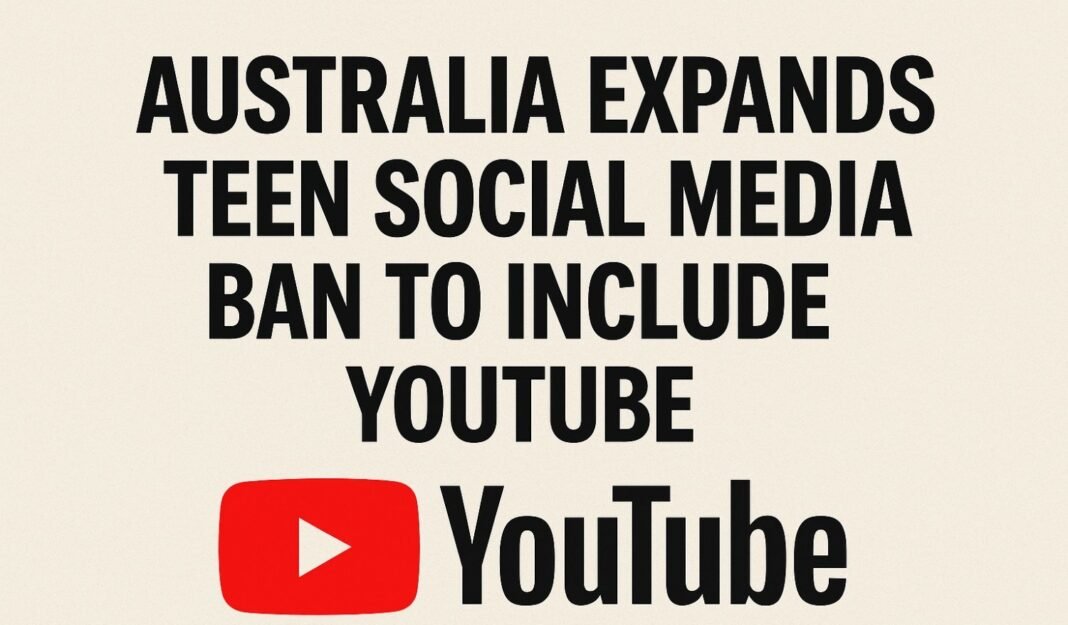Australia Enforces Broad Social Media Ban for Under-16s
In a landmark move watched closely by international policymakers, the Australian government has officially included YouTube in its sweeping social media ban targeting children under the age of 16. The ban, set to take effect in December 2025, will prohibit minors from maintaining accounts on major platforms, marking a significant expansion of digital restrictions intended to safeguard young users.
Initially, YouTube—owned by tech giant Google—was expected to be excluded from the ban. However, the government reversed its position following advice from the country’s eSafety Commissioner, Julie Inman Grant, who cited the platform as a primary source of harmful online content among children aged 10 to 15. While minors will still be able to passively view videos on YouTube, they will no longer be allowed to create accounts, upload videos, comment, or subscribe to channels.
Government Pushes Back Against Tech Opposition
The inclusion of YouTube comes despite resistance from Google, which had argued that the platform functions more like an educational and entertainment tool than a traditional social media network. In a statement released Wednesday, YouTube reiterated its stance that it offers meaningful benefits to younger Australians and should not be classified in the same category as platforms like TikTok, Instagram, Snapchat, Facebook, or X (formerly Twitter).
Government officials, however, remained firm. Communications Minister Anika Wells emphasized the dangers posed by algorithm-driven platforms that can expose children to harmful material and addictive behaviors. “We know social media can be a place of connection, but it can also be a breeding ground for harm,” Wells said. “This isn’t about removing the internet—it’s about setting healthy boundaries.”
She likened the digital environment to the ocean, full of risks that children cannot navigate alone: “Trying to teach kids to survive online is like teaching them to swim in open waters filled with rips and sharks. We must police the sharks.”
Legal Tensions and International Interest
The policy shift comes amid reports that Google had been considering legal action against the Australian government, arguing that banning YouTube accounts for under-16s could be seen as a limitation on political expression and access to information. While the company has not confirmed any litigation plans, it stated it will “consider next steps” and continue dialogue with the federal government.
Prime Minister Anthony Albanese acknowledged that the ban is not a complete solution but argued that it is a necessary step in reducing the psychological and emotional damage inflicted by social media on young Australians. “Social media is doing social harm to our children,” he said. “And I want parents to know we are taking that seriously.”
International responses to Australia’s move have been swift. Norway has already announced plans for a similar policy, and officials in the United Kingdom say they are actively exploring the feasibility of comparable restrictions.
How the Ban Will Work
Under the new regulation, tech companies will be required to block all new account registrations from users under 16 and deactivate any existing accounts belonging to minors. Platforms found to be non-compliant face penalties of up to A$50 million (US$32.5 million). Companies must also prevent workarounds, such as minors using fake birthdates, and act promptly to fix enforcement failures.
While most mainstream social media platforms are included, exceptions will be made for apps that serve primarily educational, health-related, messaging, or gaming purposes, provided they are deemed to present minimal social media risks.
The full legislative framework detailing implementation and enforcement is expected to be presented to the federal parliament later this week. As Australia takes the global lead on this issue, the world will be watching closely to see how effectively these measures can balance child protection with digital freedom.








